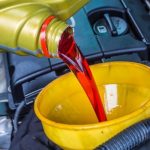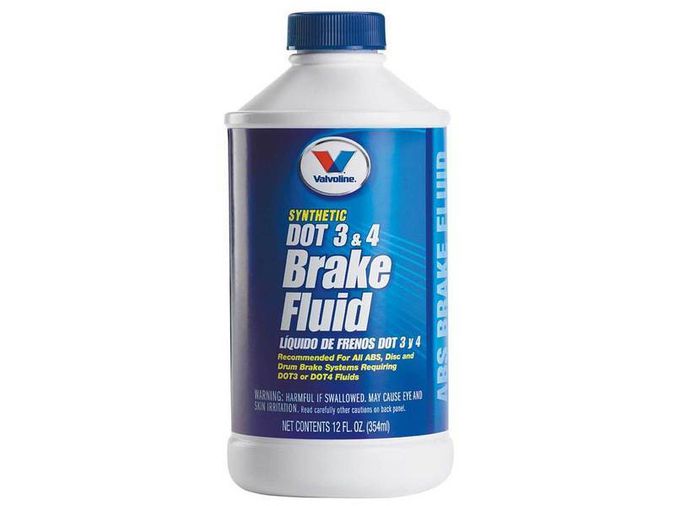If you just bought an automobile and don’t know much about the components of a car engine, you may find it difficult to check brake fluid. So we we have decided to show you how to check brake fluid in this article. We shall also include a video which will further provide helpful tips for you. Before we show you this easy steps of checking brake fluid, let us briefly consider some of the signs of low brake fluid.
Signs Of Low Brake Fluid
Your braking experience may change if your brake fluid is starting to break down or has seeped out. First, pull over to a safe location and check the level and condition of your braking fluid.
Have your car hauled to an automotive center for an emergency evaluation if the fluid doesn’t appear correct or something doesn’t feel right. If the brakes aren’t working properly, don’t attempt to drive the vehicle. Don’t jeopardize your or anybody else’s safety.
Brake Warning Light Flashes
Brake sensors in most automobiles interact with the car’s internal computer to warn the driver of any potential problems. The brake light may illuminate due to insufficient brake fluid. Braking fluid should stay close to full because the brake system is totally sealed; however, some fluid loss is to be expected. Have your car inspected immediately if a considerable volume of fluid is missing.
Dirty, Discolored Fluid
Fluid that is brown or black in color or has particles floating in it is old and dirty. Low fluid levels, especially if the system has recently been filled, could signal a leak. Leaks in brake fluid are dangerous since they provide little or no stopping power while driving.
Spongy Feeling Of Brake Pad
When you step on the brake pedal, low brake fluid can give you a spongy feeling in your brakes. This happens because a build-up of moisture in the brake system begins to boil as a result of the extreme heat produced while braking. Air pressure in the brake lines rises as a result of this. Because air cannot be compressed like brake fluid, it causes the brake pedal to sink more, lowering the car’s stopping power.
Recent Brake Replacement
You wouldn’t use used oil from your old engine if you replaced your car’s engine, right? The same can be said about brake fluid. When the hydraulic system is exposed to the air, the risk of contamination is considerable. By flushing out any old brake fluid and replacing it with fresh, clean brake fluid, you’re ensuring that your brakes perform to their full potential and protecting yourself and others on the road from brake failure.
Read also: Where Is The Brake In a Car?
How To Check Brake Fluid
Follow the steps below if you want to check your brake fluid:
Locate Your Brake Master Cylinder Reservoir
You must first locate the brake master cylinder reservoir in order to check the brake fluid. This reservoir is usually a polyethylene canister located near the firewall in the engine compartment’s back. It’s normally near the brake pedal on the driver’s side of the brake booster.
Consult your owner’s handbook if you’re having problems finding the reservoir for your brake master cylinder. Most reservoirs in automobiles built after the 1980s are translucent plastic with a line visible on the outside to indicate the fluid level.
A metal reservoir with a clamp to secure the lid is found on older automobiles. Check your owner’s manual for extra information if you have an older vehicle with anti-lock brakes. Before you can open the reservoir on these vehicles, you must normally pump the brake pedal 25 to 30 times.
Clean the lid well before prying open the clamp and opening the lid with a screwdriver when you’re ready. On the reservoir’s interior, you should notice a fluid line.
Make sure you have everything you’ll need when you need to access your brake master cylinder reservoir. Brake fluid can be harmed by being exposed to wet air. If you leave your brake fluid container open for an extended period of time, this may happen.
Exposed brake fluid might be compromised in as little as 15 minutes depending on your environment and air quality. Keep the master cylinder reservoir and brake fluid container as airtight as feasible.
Check Your Fluid Color and Level
Make sure your brake fluid is filled to the proper level. If not, your brake fluid may need to be refilled. Wear-out brake pads, on the other hand, can result in low brake fluid. The caliper piston will have to move a little further in with thin brake pads, reducing the fluid level in the reservoir.
Inspect your brake pads or have a professional mechanic repair your brake pads if you see a low brake fluid level. After you’ve replaced your brake pads, check your brake fluid level to see if you need to top it off.
Examine the color of your braking fluid, even if the fluid level is correct. Dirt and other impurities could be in the dark fluid. It becomes less efficient when dirt gets into the system or as your brake fluid deteriorates over time. This can cause damage to your hydraulic components, resulting in exponential deterioration and a reduction in brake system efficiency.
Watch video below which shows how to check brake fluid:
How To Add Brake Fluid To Your Car
Replace your brake fluid every two years as a basic rule of thumb. This will ensure that your brake system is used efficiently and safely for many years. Choose the exact brake fluid that your owner’s handbook or a skilled mechanic recommends. Overfilling your brake master cylinder reservoir, mixing brake fluid, or using the incorrect formula can cause harm to your car and prevent your brakes from working properly.
DOT3 or DOT4 braking fluid is used in most systems. Your owner’s manual or the brake master cylinder reservoir lid will include the exact formula for your car. Internal seals and other hydraulic components in your brake system can be damaged if you skip this critical step.
Purchase the necessary brake fluid and grab your safety gear if you need to top off your brake master cylinder reservoir. Brake fluid is harmful and corrosive, so keep it away from your skin, eyes, and any painted parts of your car. Any rags containing a significant amount of brake fluid should be taken to a hazardous waste disposal facility.
Simply reinstall the cap and test your brakes after you’ve filled your reservoir. Your braking system must be in good working order. Consult your owner’s manual and a local auto specialist if you need to bleed your brakes and change the brake fluid rather than merely adding extra. Bleed the lines and replenish your brake lines and master cylinder reservoir while removing any trapped air before replacing the fluid.









